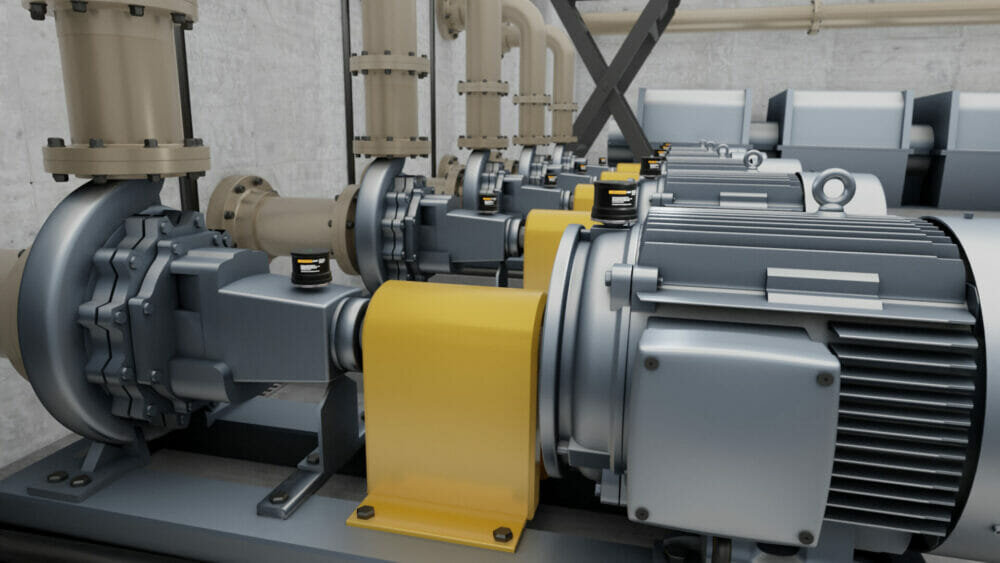Back in 1864, Jack Daniel launched the first registered distillery in the United States. Today, Jack Daniel’s is part of the Brown-Forman family of brands producing and distributing spirits and wine worldwide.
The Jack Daniel Cooperage, the facility where barrels or casks are made, creates barrels for Jack Daniel’s and other brands within Brown-Forman, producing thousands of barrels per week.
Such a facility requires a well-trained team to track and analyse maintenance needs to increase productivity and ensure a smooth efficient production process.
Martin Nelson, a maintenance and engineering manager at Jack Daniel Cooperage, and his team of repair and preventative maintenance technicians are responsible for just that. Nelson and his team use eMaint CMMS software and two types of vibration sensors from Fluke Reliability to keep their facility up and running.
By connecting condition monitoring sensors with their maintenance software, the Jack Daniel Cooperage team can automatically generate work orders when their equipment exceeds temperature and vibration thresholds. As a result, they have improved their preventative maintenance (PM) and moved into predictive maintenance as well.
While the whiskey is made with Jack Daniel’s time-honored and time-consuming process, the cooperage uses state-of-the art technology to make its barrels. “The number one cost that goes into a whiskey is the barrel,” Nelson said.
To meet Jack Daniel’s exacting standards, Nelson’s team needed to test and prove the value of various prototypes of custom barrel-making equipment for different parts of the process. In addition to the machinery used to make the barrels themselves, the cooperage has an extensive dust collection system which needed to be taken into account. All of it requires a strong attention to detail and a firm commitment to an asset management strategy.

Working with a CMMS programme
Every technician on the team is now using eMaint. The features they rely on most are the work orders and inventory management. They have customised PMs to include pictures with captions explaining what needs to be done.
“I have several PM reports that autogenerate to me and give me the status of open PMs, overdue PMs, and PM completion percentage, which is huge,” Nelson said. “We are slated to have 100% PM completion on a weekly basis.”
The work order system in eMaint has been a crucial tool for the cooperage in helping to plan and prioritis’e the work that gets done. “One of the nice things about eMaint is I can differentiate work orders,” he said. “I segregate all the project stuff out versus what’s going on in real time.”
Nelson said he uses several different categories of work orders, including RCCA (root cause and corrective action), safety work, corrective maintenance, TPM (total productive maintenance), and emergency maintenance. Identifying what’s most urgent, for example, or what will require specialised parts or labour, helps the team ensure they have the resources they need when and where they need them.
Seeing the results
“Working with the developers of eMaint has been overall a good experience, and I’ve been told that some of the things we’re doing have never been done before,” Nelson said. “So what’s always the fun part is the development of different processes to help mitigate risk of downtime and make a business unit stronger. And when you’re stronger, you’re more profitable.”
The revamped inventory management system at the Jack Daniel Cooperage has been so successful that other facilities within Brown-Forman will implement it as well.
“The buy-in comes when you demonstrate the effectiveness of mitigating downtime and start showing them the uptime,” Nelson added.
Enhancing the benefits of CMMS with sensors
In addition to using eMaint, the cooperage also uses two types of vibration monitoring sensors from Fluke Reliability. The sensors and software work together to keep the maintenance team updated on how equipment is operating. “I like the way that it does the reporting and auto-generates the work orders when it’s out of its threshold—over the temperature or vibration,” Nelson said.
VibGuard vibration sensors offer advanced alarm tools to monitor for specific failures. They collect several different types of data. The cooperage also uses other Fluke vibration sensors. With access to real-time machine health data in their CMMS, maintenance teams can advance their connected reliability journey. Connected reliability is about centralising data from different systems and tools to make it readily accessible and actionable. Pairing sensors and software makes a more holistic approach possible, where teams are able to plan rather than just react.
“I’m running Fluke vibration sensors on a lot of my A class equipment,” Nelson said. “Now we’re not only getting our preventative maintenance where it needs to be, we’ve also moved into the predictive maintenance side.”
Approximately 31 staves—narrow lengths of wood—go into making each barrel. The staves are precisely shaped on all sides with the cooperage’s specialised equipment. Thousands of barrel staves are processed each shift.
“Since we’re in the woodworking business, we have a very vast dust collection system,” Nelson said. “And if that dust collection system goes down, it shuts the operation down.”
Due to this, the cooperage now also uses vibration sensors on the gearboxes, blowers, bearings, and motors that are part of the dust collection system to ensure a holistic maintenance strategy.
Looking to the future
With a focus on continuous improvement and connected reliability utilising Fluke Reliability’s solutions, the Jack Daniel’s cooperage has overhauled their maintenance practices and experienced so much success that their strategies are being adopted throughout Brown-Forman.








